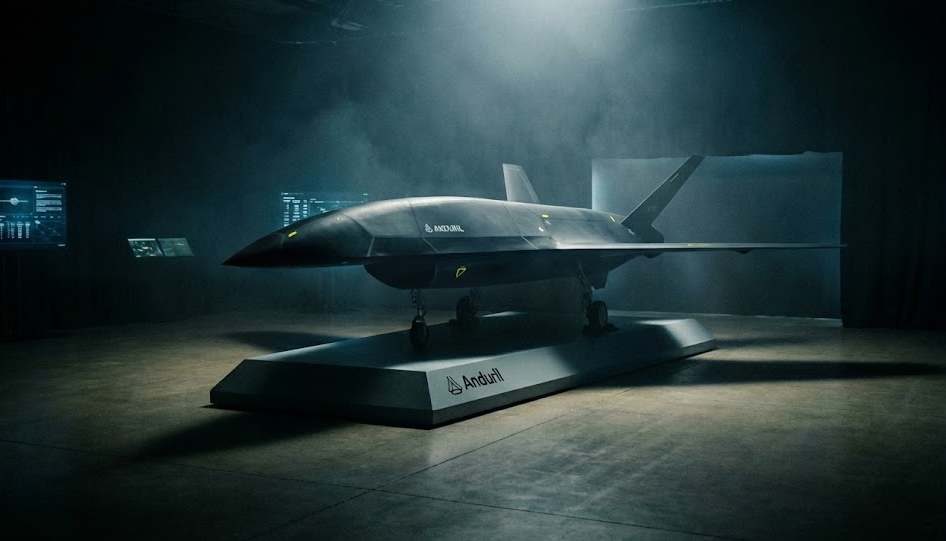
The military-industrial complex has been coasting. For decades, legacy giants like Lockheed Martin, Raytheon, and Northrop Grumman have engineered slow, expensive, and often over-engineered weapons systems under contracts that reward delay more than performance. Enter Anduril, not with a whisper, but with a war chest and a factory blueprint. In just a few years, it has gone from outsider startup to the Pentagon’s unexpected favourite. And the reason isn’t just faster drones or cheaper missiles. It’s structural. Ideological. Almost religious.
Founded in 2017 by Palmer Luckey, better known to the public as the ousted Oculus wunderkind, Anduril was born from the belief that Silicon Valley had turned its back on national security. This wasn’t just a business plan; it was an insurgency. While Google employees were walking out over military AI projects, Anduril’s founders were walking into the Pentagon with a software-first operating system, a fixed-price business model, and a commitment to actually delivering products before talking about them.
It worked. They sidestepped the glacial pace of Department of Defense procurement by going directly to the Department of Homeland Security with a surveillance solution for border control. The revenue helped prove out their core platform, Lattice, a battlefield operating system that processes sensor data at the edge, fuses it, and presents commanders with only the signals that matter. No more drowning in video feeds. No more vendor-locked radar unable to speak to missiles. Lattice is open, mesh-based, and designed to make hardware, even legacy kit, behave like it belongs in 2025.
That’s the twist. Anduril doesn’t just make new things. It makes old things work together.
Where the defence primes have designed baroque weapon systems tailored to singular, siloed needs, Anduril is building modular, attritable, autonomous platforms, drones, loitering munitions, interceptors, submarines, that all speak the same language: software. Their Fury drone is a direct threat to manned fighters. Their Barracuda missile family costs a fraction of a Tomahawk but is built for scale. Their Roadrunner interceptor can take off vertically, decide mid-flight whether to engage, and land tail-first if the threat isn’t real. And then go again. Reusability in air defence, a concept legacy firms never even entertained, is now live.
These aren’t just prototypes. The Department of Defense isn’t just intrigued; it’s deploying them. Anduril won prime contracts for major programs like the Collaborative Combat Aircraft and the Replicator initiative. That’s not hobbyist work. It’s a changing of the guard.
But the real provocation lies in how Anduril operates. Traditional primes use cost-plus contracts: build something, charge whatever it costs plus a fixed margin. If the schedule slips? That’s billable. If the tech is obsolete by launch? That’s someone else’s problem. There’s no reason to be fast, only thorough and compliant.
Anduril doesn’t play that game. It builds with private capital, prices commercially, and eats the risk. If the DoD doesn’t buy the product, investors lose, not the taxpayer. This flips the incentive model. Suddenly, speed matters. Performance matters. Failure costs money.
The automotive industry got fat, old and unimaginative. Tesla arrived with the opposite approach. Anduril is facing the same setup in the military-industrial complex and it’s having the same impact for the same reasons. Legacy firms are now scrambling to adapt. Lockheed has launched a reorganisation program to digitise its own production and mimic Anduril’s software-defined factories. General Atomics, once the unchallenged drone king, now finds itself in a direct two-horse race with Anduril for future unmanned aviation supremacy.
But here’s the problem: this isn’t just about structure. It’s about mindset. You can replicate production techniques and hire software engineers, but if your leadership is still made up of industry lifers who came up through the old way of doing things, you’re just reupholstering a worn-out seat. True transformation won’t happen until the people at the top are replaced or displaced. As long as the old guy at the table still calls the shots, the mindset will never move fast enough to keep up with a company built from day one around a different operating system.
All of this is built atop Arsenal-1, Anduril’s manufacturing facility in Ohio. Unlike traditional defence factories, Arsenal-1 is software-defined. It can reallocate resources on the fly, switching from drone assembly to missile production week by week depending on need. That’s a direct challenge to the legacy model of low-volume, hand-built platforms that require specialised lines and years of setup. Arsenal-1 is aiming for scale, not prestige. And scale is exactly what modern warfare demands.
Still, not everyone is convinced. Critics say Anduril is just another “tech bro” operation, long on pitch decks, short on rugged military reliability. Others suggest its promises of cost and speed will evaporate once its systems are exposed to real-world wear, logistics and the entropy of war. There are concerns about manufacturing scale, supply chain fragility, and whether the company can avoid becoming the very bloat it claims to disrupt.
But the trajectory is already in motion. Anduril has won contracts. It has operational systems in the field. And it has forced the Pentagon to acknowledge that there is, in fact, another way.
The deeper issue here isn’t technical. It’s systemic. Systems optimised for stability tend to reject change until that change is unavoidable. The military-industrial complex has been one of the most stable, and stagnant, systems in the Western world. Anduril, for now, represents pressure from outside that can’t be ignored.
If it delivers at scale, the primes will have no choice but to change or collapse. If it fails, it will still have moved the Overton window so far that the next insurgent will find the path cleared.
Either way, a hornet has entered the beehive.